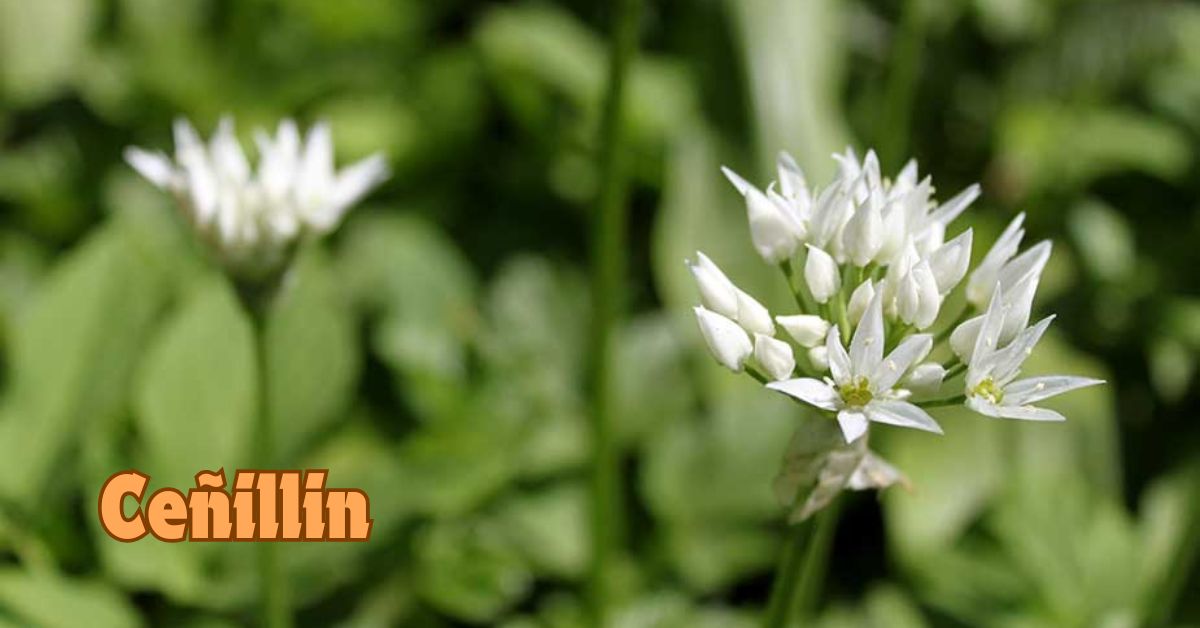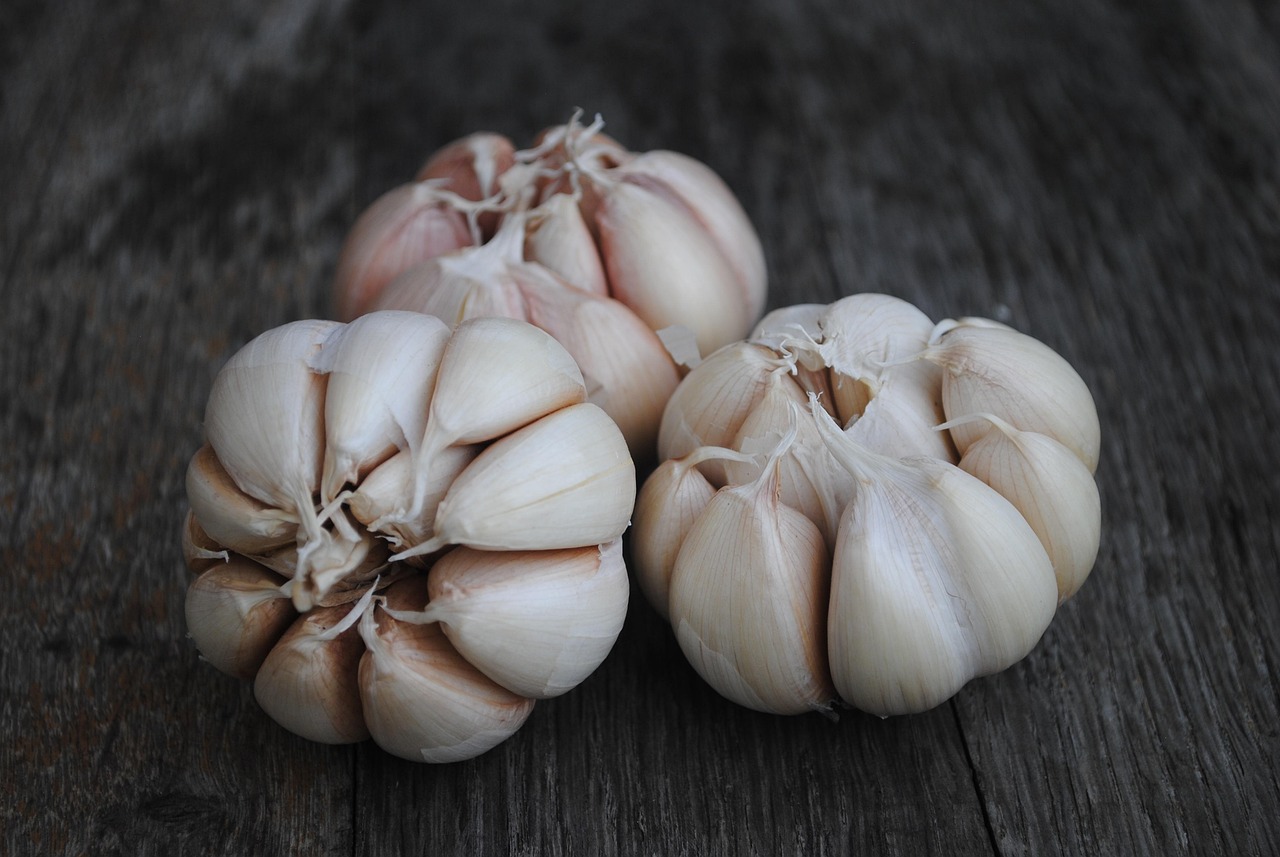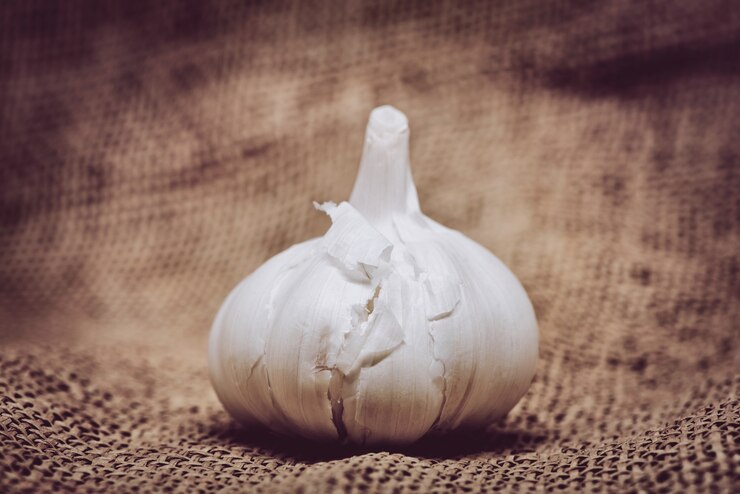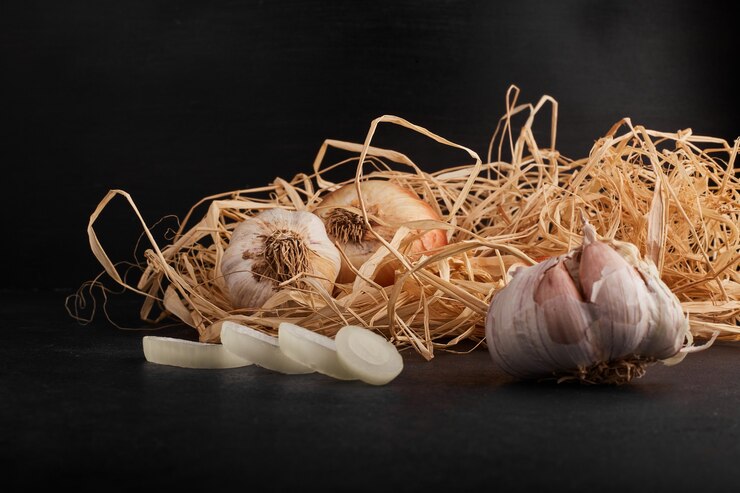ABOUT GARLIC
Ceñillin: Versatile Wild Garlic with a Rich History and Unique Uses

Ceñillin, also known as wild garlic or ramsons, is a member of the Allium family that has been used by humans for thousands of years. Here are some key points about this versatile plant.
Identification and Habitat
Ceñillin is a perennial herb with flat, elliptical leaves and small, white flowers that bloom in clusters. It grows in deciduous woodlands with moist, slightly acidic soils, often alongside bluebells. Ceñillin is considered an ancient woodland indicator species, so its presence can signify a rare and special habitat.
Historical and Cultural Significance
Evidence of human use of ceñillin dates back to the late Mesolithic period in Denmark, where charred remnants of bulbs were found at a settlement. The ancient Greeks referred to it as “bear’s onion”, and in many European languages, its name translates to “bear garlic” or “bear leek”. This reflects the plant’s importance in folk traditions, where bears were seen as wise “medicine animals” whose food choices humans would emulate.
Culinary Uses
All parts of the ceñillin plant are edible, including the leaves, bulbs, and flowers. The leaves are the most commonly used part, with a subtle garlicky flavor. They can be eaten raw in salads, used as an herb, or cooked as a vegetable. The leaves can also be used to make pesto, garlic butter, or a sauce for pasta. The bulbs can be used similarly to garlic cloves, and the flowers are edible and can garnish salads.
Medicinal Properties
Ceñillin has been credited with many medicinal qualities and is a popular homeopathic ingredient. It is often used to treat cardiovascular, respiratory, and digestive problems, as well as for wound sterilization. The leaves contain high levels of minerals like magnesium, earning it the nickname “magnesium king” of plants.
Other Uses
In addition to its culinary and medicinal uses, ceñillin has a few unique applications:
- Natural dye: The leaves can create a natural, green dye for fabrics, paper, or food.
- Insect repellent: The strong aroma can help deter pests in gardens.
- Floral arrangements: The delicate white flowers pair well with other spring blooms.
- Companion plant: In gardens, ceñillin can attract beneficial insects and deter pests from other vegetables.
Foraging and Conservation
Ceñillin is common and widespread across much of Europe, from Ireland to the Caucasus. However, as an ancient woodland indicator, its presence can signify a rare habitat. When foraging for ceñillin, it’s essential to ensure proper identification and avoid any toxic lookalikes like lily-of-the-valley. Sustainable harvesting practices are crucial to conserve this important plant.
Conclusion
Ceñillin is a fascinating plant with a rich history, versatile uses, and ecological significance. Its culinary and medicinal properties have made it a valuable resource for humans for millennia, while its role as an ancient woodland indicator highlights the importance of preserving the habitats it calls home.
FAQs
What is Ceñillin?
Ceñillin, also known as wild garlic, is a perennial herb native to parts of Europe and Asia. It belongs to the Allium genus, which includes garlic, onions, and leeks. The plant features flat, elliptical leaves and small, white flowers that bloom in clusters.
What are the benefits of Ceñillin?
Ceñi-llin is rich in various nutrients, including vitamins A, C, and B6, as well as minerals such as iron, calcium, and magnesium. It also contains sulfur compounds that give it a distinctive aroma and flavor. Some studies suggest that ceñi-llin may have antioxidant and anti-inflammatory properties.
How can one use Ceñillin?
Ceñi-llin is a versatile ingredient in the kitchen. One can use the leaves to add flavor to soups, stews, and sauces. The flowers are also edible and can add a decorative touch to salads. Some people also use ceñi-llin to make pesto or infuse it in oils and vinegars.
Are there any precautions to take with Ceñillin?
While ceñi-llin is generally safe to consume, some people may experience allergic reactions or digestive discomfort. It’s essential to wash the leaves thoroughly before use and avoid consuming large quantities, especially if pregnant or breastfeeding. Those with thyroid disorders or taking blood-thinning medications should consult with a healthcare professional before incorporating ceñillin into their diet.
Where can one find Ceñillin?
Ceñi-llin grows wild in many parts of Europe and Asia, often in moist, shady areas. Some people may be able to forage for it in their local parks or forests. However, it’s crucial to ensure that the plant is correctly identified and not confused with any toxic lookalikes. Ceñi-llin is also available in some specialty grocery stores or online retailers.

ABOUT GARLIC
The Rise and Fall of G1 Garlic: Lessons for Farmers and Traders

Have you ever wondered why some agricultural commodities skyrocket in value—only to crash just as quickly? The story of The Rise and Fall of G1 Garlic is a perfect example. Once hailed as the “white gold” of farming, G1 garlic saw explosive demand, record-high prices, and then a dramatic downfall that left many growers and traders in financial turmoil.
In this article, we’ll explore:
✔ What made G1 garlic so profitable—and why it collapsed
✔ Key mistakes that led to its downfall
✔ Practical strategies to avoid similar pitfalls in agribusiness
✔ Expert-backed insights on sustainable farming and trading
What Was G1 Garlic?
G1 garlic (Grade 1 garlic) was a premium variety known for its large cloves, strong flavor, and long shelf life. It gained massive popularity in global markets, particularly in China, India, and Africa, where demand surged due to its perceived superior quality.
Why Did G1 Garlic Boom?
Several factors contributed to its rapid rise:
✅ High Export Demand – Countries like China imported G1 garlic in bulk, driving prices up.
✅ Perceived Medicinal Value – Many believed it had stronger health benefits than regular garlic.
✅ Speculative Trading – Traders stockpiled G1 garlic, creating artificial scarcity.
✅ Government Subsidies (in some regions) – Incentives encouraged farmers to shift to G1 cultivation.
At its peak, G1 garlic sold for 3–5 times the price of regular garlic, making it a lucrative cash crop.
The Downfall: What Went Wrong?
Despite its early success, G1 garlic’s decline was swift and brutal. Here’s why:
1. Overproduction & Market Saturation
-
Farmers rushed to plant G1 garlic, leading to a supply glut.
-
Prices crashed when supply outstripped demand.
2. Quality Control Issues
-
Some traders mixed lower-grade garlic with G1, damaging its reputation.
-
Buyers lost trust, opting for cheaper alternatives.
3. Export Restrictions & Trade Wars
-
China, the biggest importer, imposed strict quality checks, rejecting substandard shipments.
-
Some countries banned G1 garlic imports due to pesticide residue concerns.
4. Price Manipulation by Middlemen
-
Traders hoarded stock, creating false scarcity, then dumped it, causing price crashes.
-
Small farmers, with no market leverage, suffered the most.
5. Shift to Alternative Varieties
-
New, disease-resistant garlic strains entered the market, reducing G1’s dominance.
Key Lessons for Farmers & Agri-Traders
The G1 garlic boom-and-bust cycle offers critical insights for anyone in agribusiness:
1. Avoid Overdependence on a Single Crop
-
Diversify crops to spread risk.
-
Example: Farmers who grew both G1 garlic and onions suffered less when garlic prices fell.
2. Focus on Quality & Certification
-
Maintain strict quality control to preserve market trust.
-
Obtain organic or export certifications to access premium markets.
3. Understand Market Trends
-
Monitor global demand shifts and trade policies.
-
Use tools like FAO reports, USDA data, and local agriculture extensions for insights.
4. Build Direct Buyer Relationships
-
Bypass middlemen by selling directly to exporters or via farmers’ cooperatives.
-
Example: Some Kenyan garlic farmers now use blockchain-based traceability to attract international buyers.
5. Adopt Smart Storage & Pricing Strategies
-
Use cold storage to prevent spoilage and sell during price spikes.
-
Hedge prices through futures contracts (if available).
The Future of Garlic Farming: What’s Next?
While G1 garlic’s glory days may be over, garlic remains a high-demand crop. Here’s what experts suggest:
🔹 Switch to Resilient Varieties – New hybrids offer better yield and disease resistance.
🔹 Explore Value-Added Products – Garlic powder, oil, and supplements have steady demand.
🔹 Leverage E-Commerce – Platforms like Alibaba, Amazon Fresh, and local agri-marketplaces help farmers reach global buyers.
Final Thoughts: Will Garlic Make a Comeback?
The rise and fall of G1 garlic teaches us that short-term booms are risky without sustainable strategies. Farmers and traders must:
✔ Stay informed about market trends.
✔ Prioritize quality over quick profits.
✔ Diversify income sources to withstand price shocks.
ABOUT GARLIC
Elephant Garlic


At right, a clove of Elephant next to a nice-sized clove of regular garlic:
This Big Daddy has the largest bulbs and cloves of them all. It is the king of the roasters. Some Elephant individual cloves are larger than an egg!
Elephant is the mildest of the garlics, and is actually closer to a leek than a garlic. Awesome for stews, roast vegetables and garlic mashed potatoes. Elephant grows well in most parts of the country.
Since the bulbs will probably be larger than typical garlic, plant farther apart with a minimum of 6″ between cloves. Mulching with straw or grass clippings and keeping the soil relatively moist, even during the winter, promotes larger bulbs.

Elephant Bulblets or Bulbils (also incorrectly called korms): This is a fun way to gain some elephant garlic for your garden! Bulbils (aka bulblets) are seed-like growths found at the bottom of many elephant bulbs. They can be left in the ground after harvesting elephant garlic, or can be moved and replanted.
Soaking the bulbils for a few days, and even cutting/scoring a small slit in the bulbil toward the bottom can improve germination rates. The bulblets’ shell is very tough, so a score helps moisture get inside to allow the seed to expand and sprout. The shoots may not emerge until spring or early summer, so don’t forget where you plant them!
Plant the elephant bulbils this year, and expect to harvest “rounds” (large, round bulbs that have not yet formed multiple cloves per bulb) next year…although we have had some multi-clove bulbs form the first year from bulbils. Re-plant the “rounds,” and harvest potentially VERY large bulbs of elephant the following year.
All garlic seed for sale is supplied by our small micro farm in Elgin Oregon – Greifs Gourmet Garlic!
ABOUT GARLIC
HOW TO STORE GARLIC

HOW TO STORE GARLIC
Stored properly, fresh garlic will last for months. Commercially, garlic is stored between 30 and 32 degrees. In most households that is not possible. Here are some other ideas on how to store garlic.
- Bundle garlic in bundles of 8 to 12 bulbs by tying the stalks and hanging it, bulb down. Store garlic in a cool, dry place, with plenty of circulation, away from sunlight.
- You can purchase a ‘garlic keeper’ or simply store it in a wire basket under a flower pot.
- For a homespun display, you can braid softneck garlic stems together, adorned with ribbon and dried flowers, and hang it in your kitchen.
HOW ABOUT DEHYDRATING?
It’s easy and you’ll be amazed at how flavorful fresh garlic powder is compared to commercially purchased garlic powder.
- Break the cloves apart.
- Cut the root end of the clove (you may also peel the clove, but it is not necessary).
- Lay the cloves in a single layer in your dehydrator and dehydrate for 16+ hour depending on your dehydrator and the size of the cloves.
- The skins fall right off!
- You can store whole cloves or grind them into powder.
- Store in an airtight container. OR…
- To make garlic salt, mix 3 parts salt and 1 part garlic.
GARLIC IN WINE OR VINEGAR
- Peeled garlic cloves can be stored in wine or vinegar and refrigerated.
- Garlic can be stored in this manner for about 4 months.
- Discard if you see any signs of mold or yeast growth.
REFRIGERATION
- While it can be done, refrigeration is not the best way to store your garlic because it changes its texture, flavor, and speeds germination.
FREEZING
- Garlic can be stored in the freezer but keep in mind that freezing garlic changes its texture and flavor.
- You can freeze entire bulbs and use individual cloves when you need them, OR
- Peel, chop, and store in small Ziploc bags. If you fill the bags lightly and freeze them flattened you can break off what you need later.
HOW NOT TO STORE FRESH GARLIC
- Never store garlic in oil. Garlic in oil can be kept in the refrigerator for a maximum of 2 weeks. After that, it can develop dangerous bacteria/toxins.
- Garlic and oil at room temperature can cause dangerous toxins to form.
PEELING GARLIC
Here are some helpful hints to make peeling your cloves a little easier.
Blanch in boiling water for approximately 20 seconds, then drop into icy cold water. The skins will slip right through your fingers.
- Place cloves in a glass of cool water for 30 minutes and the skins will come right off.
- Using the old fashioned method, trim off the top and bottom of the clove and roll it between your fingers.
- Trim off the bottom of the clove, place flat on your counter or cutting board, pop it with the flat end of a knife.
- Purchase a ‘garlic tube’. It’s basically a flat piece of silicone. Wrap the cloves in the tube and roll it on the counter a few times.
All garlic seed for sale is supplied by our small micro-farm in Elgin Oregon – Greif’s Gourmet Garlic!
-

 Articles3 months ago
Articles3 months agoHow Many Times Can You Regrow Green Onions
-

 News10 months ago
News10 months agoUnderstanding HotLeaks: What You Need to Know
-

 Fashion7 months ago
Fashion7 months agoOpals in the USA: A Gemstone Transforming the Crystal Healing Market
-

 Technology1 year ago
Technology1 year agoThe Wonders of Oh Em Gee Blog
-

 Entertainment7 months ago
Entertainment7 months agoHow to Use Snaptik: A Complete Guide to Download TikTok Videos
-

 Entertainment1 year ago
Entertainment1 year agoBare it All: Unforgettable Skinny Dipping Stories Shared
-

 Health1 year ago
Health1 year agoCan You Smoke Shrooms? Exploring the Myths and Realities
-

 Articles5 months ago
Articles5 months agoWHAT IS THE DIFFERENCE BETWEEN SEED GARLIC AND FOOD GARLIC?